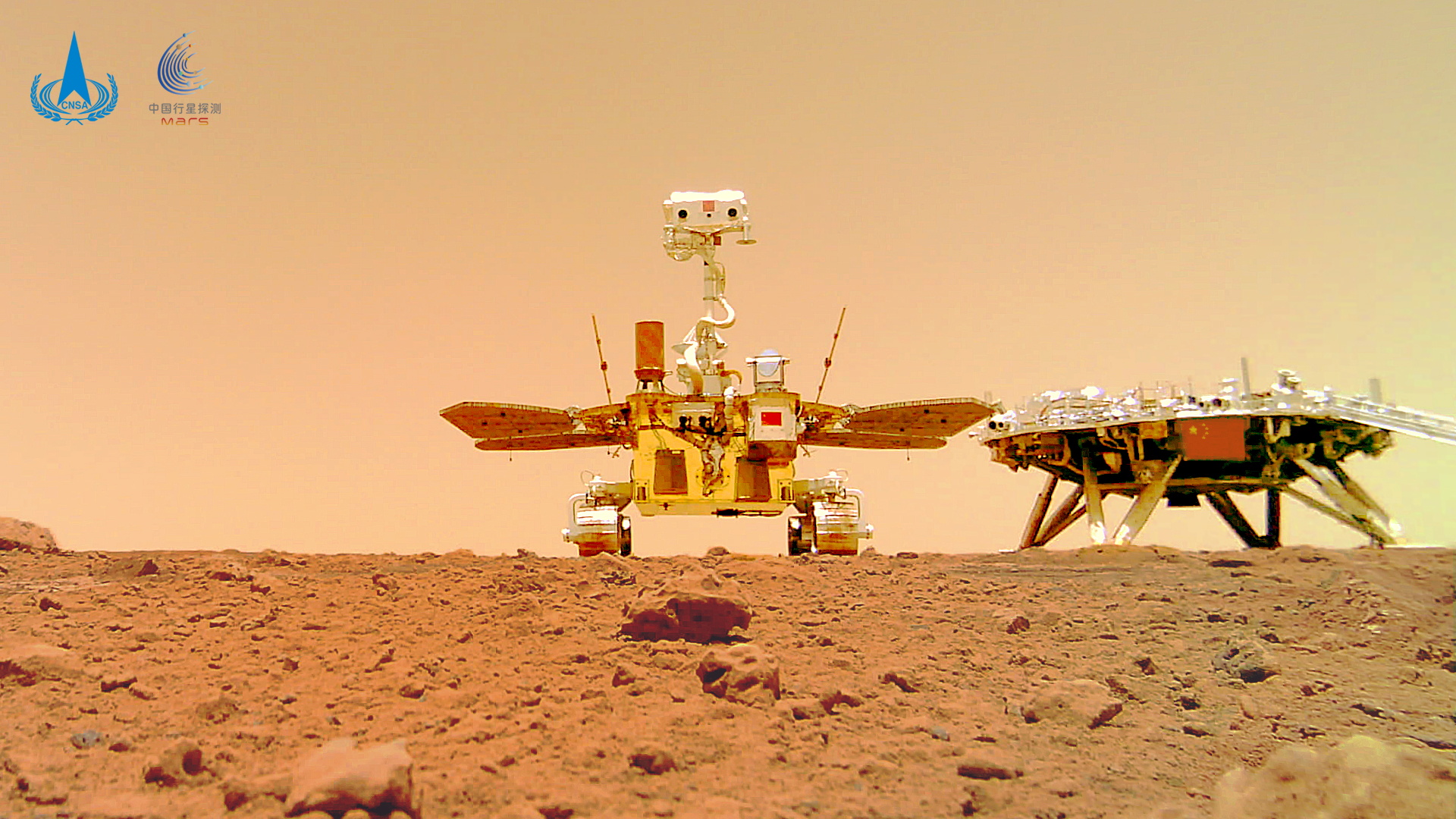
Zhurong should have woken from planned hibernation in December but a dust build-up has likely affected power generation.
China’s Mars rover, which has been in longer-than-expected hibernation on the red planet since May 2022, has likely suffered excessive accumulation of sand and dust, its mission designer has said, breaking months of silence about the status of the space vehicle.
The fully robotic Zhurong, named after a mythical Chinese god of fire, was expected to have woken up in December after entering a planned sleep mode in May 2022 as falling solar radiation due to the advent of winter on Mars cut its power generation.
A pile-up of dust most likely affected power generation and the rover’s ability to wake up, China’s state television CCTV reported on Tuesday, quoting Zhang Rongqiao, chief designer of China’s Mars exploration programme.
The Zhurong had explored the Martian surface for 358 days and travelled for 1,921 metres (2,100 yards), Zhang said, far exceeding its original mission time span of three months.
Images beamed back from Mars showed the Chinese rover had not changed its position since at least between September 8, 2022 and February 7, 2023, according to the University of Arizona, which manages a high-resolution camera on board NASA’s Mars Reconnaissance Orbiter. The camera is the most powerful ever sent to another planet.
Andrew Jones, a reporter focused on China’s space programme, tweeted on Tuesday that an official update on the rover’s status was welcome, though it was not conclusive that the Zhurong might never reawaken.
“So, this is not conclusive. Hard to gauge dust coverage on Zhurong’s solar panels from orbit,” Jones said in a tweet, noting that it could still wake up with the summer solstice on Mars in July.
“If it can wake up, it can use active dust cleaning measures. It could already be doomed though,” he added.
Good to have an official update. So, this is not conclusive. Hard to gauge dust coverage on Zhurong's solar panels from orbit. Could still wake up, with summer solstice but until July 12 . If it can wake up, it can use active dust cleaning measures. It could already be doomed tho
— Andrew Jones (@AJ_FI) April 25, 2023
The 240kg (530-pound) Zhurong, which has six scientific instruments including a high-resolution topography camera, was tasked with studying the planet’s surface soil and atmosphere after landing with no mishap in May 2021.
Powered by solar energy, Zhurong also looked for signs of ancient life, including any subsurface water and ice, using a ground-penetrating radar.
Aside from Zhurong, two other robotic rovers have been operating on Mars – NASA’s Perseverance and Curiosity, with the former roaming the planet’s surface for more than two years and the latter for about a decade.
https://ift.tt/pL0qyw1
Science
No comments:
Post a Comment